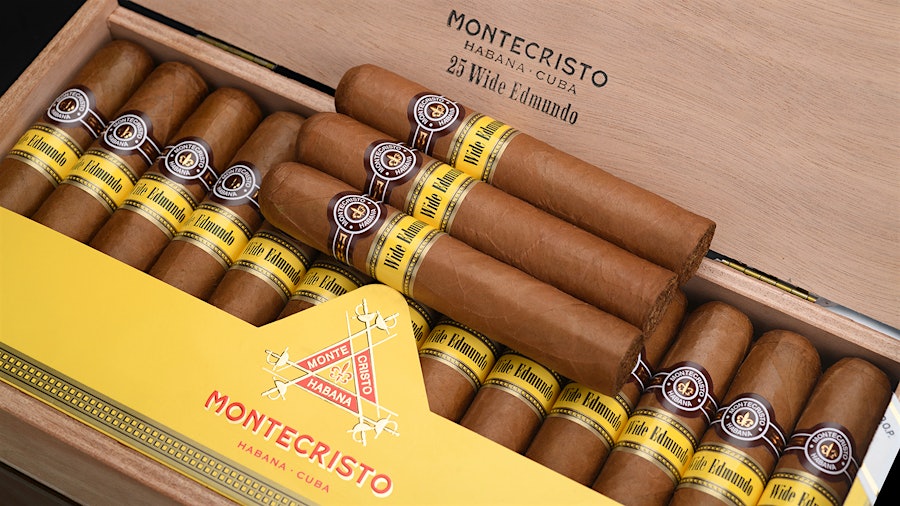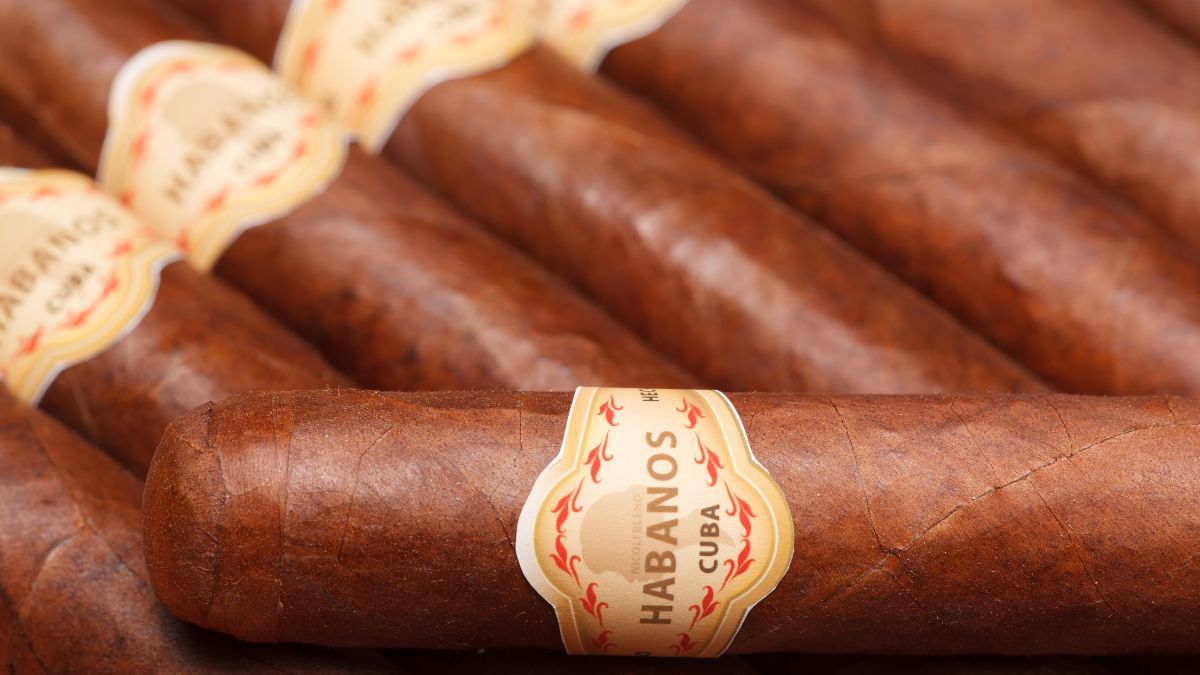Introduction to Cuban Cigars
Ah, the Cuban cigar. The mere mention of it can send aficionados into dreamy-eyed raptures. But have you ever wondered about the origin of this emblem of luxury? Let’s delve into its rich, smoke-scented past.
The Birth of the Cuban Cigar (1492 – 1700)
The Taino Tribe’s Tobacco Use
The story of the Cuban cigar begins with the Taino tribe, the indigenous people of Cuba, who used tobacco in their religious rituals and medicinal practices. They called it “Cohiba,” and who knew, their term would become one of the most prestigious cigar brands worldwide.
European Discovery of Tobacco
Enter Christopher Columbus in 1492, who found the locals partaking in this strange habit of smoking rolled-up tobacco leaves. It didn’t take long for tobacco and the practice of smoking to make its way back to Europe.
The Cuban Cigar Industry in the 1700s
Evolution of Cigar Manufacturing
By the 1700s, cigar manufacturing had become a fully-fledged industry. Spain established the world’s first cigar factory in Havana, forever tying the city to the fate of the cigar.
Expansion of Tobacco Cultivation
As the demand grew, so did tobacco cultivation, spreading through the fertile lands of Vuelta Abajo and Partido. Ah, picture those expansive fields blooming with tobacco plants!
Golden Age of Cuban Cigars (1800s – 1959)
The Impact of Cuban Independence
After Cuba gained independence from Spain in 1898, the cigar industry saw rapid expansion. A wave of innovation followed, contributing to the Golden Age of Cuban cigars.
Birth of Famous Cuban Cigar Brands
During the Golden Age of Cuban cigars, an array of distinguished brands emerged that would eventually shape the world of cigars as we know it today. Each of these brands has its own unique story and has contributed to the legacy of Cuban cigars in their own unique ways.
Cohiba

The name “Cohiba” is a Taino Indian word for tobacco, and it’s also the flagship brand of the Cuban cigar industry. The brand was established in 1966 as a diplomatic gift of the Cuban government. Cohiba cigars were made in the then top-secret, but now world-famous, El Laguito factory. For many years, they were unavailable for public purchase. Only in 1982 were these cigars released for general sale, and since then, they have set the benchmark for quality in the cigar industry.
Montecristo

One of the most famous names in the world of cigars, Montecristo, was founded in 1935. The brand’s name was inspired by Alexandre Dumas’s novel, “The Count of Monte Cristo,” a favorite among the torcedores (cigar rollers) who listened to the story being read out loud as they worked in the factory. Montecristo is known for its medium to full-bodied cigars and is particularly famous for its “No. 2” model, a pyramid-shaped cigar that is considered a staple among cigar connoisseurs.
Partagas

Founded in 1845 by Jaime Partagas, Partagas is one of the oldest Cuban cigar brands. The brand is known for its deep, earthy flavor profile that’s full-bodied and robust. The Partagas factory, located in the heart of Havana, is one of the most iconic and visited spots in the city, bearing witness to the brand’s rich history and its continued prominence in the Cuban cigar industry.
Romeo y Julieta

Romeo y Julieta, established in 1875, derived its name from Shakespeare’s famous play. The brand gained international fame under the leadership of Jose “Pepin” Rodriguez Fernandez, known for his promotional tours around the world, driving his car adorned with the Romeo y Julieta logo. This brand is well-known for its wide variety of cigar sizes and it’s mild to medium-bodied cigars that cater to both new and experienced smokers.
The emergence of these iconic brands during the Golden Age truly underlines the prestige and worldwide recognition of Cuban cigars. Each brand carries a rich history, a dedication to craftsmanship, and the very spirit of Cuba within its uniquely blended rolls. Today, they continue to dominate the world of premium cigars, their names synonymous with luxury and quality.
The Cuban Cigar Industry Post-Revolution (1960 – Present)
The Nationalization of the Cuban Cigar Industry
The Cuban Revolution of 1959 changed the landscape once again, as Fidel Castro’s government nationalized the cigar industry. Many cigar makers fled Cuba, leading to the creation of “Cuban heritage” brands in other countries.
The US Embargo and its Impact
The Cuban Missile Crisis in 1962 led to a significant turning point in the history of Cuban cigars. As a part of the escalating tension between the US and Cuba, President John F. Kennedy imposed a comprehensive trade embargo on Cuba, a move that had far-reaching consequences on the Cuban cigar industry.
The Birth of the Parallel Market
The embargo effectively split the global cigar market in two. On one side, there were Cuban cigars, unable to be legally imported into the US, but still highly sought after by American aficionados. On the other side, there was a burgeoning market for non-Cuban cigars, both within the United States and around the world.
Cuban Heritage Brands
The embargo also led to a fascinating phenomenon – the rise of “Cuban heritage” brands. Many cigar makers who had fled Cuba in the wake of the revolution set up shop in countries like the Dominican Republic, Nicaragua, and Honduras. They took with them the seeds, the knowledge, and the names of famous Cuban brands. As a result, today you might find a Partagas or a Romeo y Julieta cigar that is not made in Cuba, but instead in one of these countries. This has sometimes led to legal disputes over brand names, further complicating the landscape of the cigar industry.
Black Market and Counterfeit Cuban Cigars
The prestige of Cuban cigars and the eagerness of US consumers to get their hands on them led to the growth of the black market. Illicit Cuban cigars started to find their way into the US, despite the embargo. This situation has also given rise to counterfeit Cuban cigars, exploiting the high demand.
The Persistence of the Cuban Cigar Industry
Despite the significant challenges posed by the embargo, the Cuban cigar industry remained resilient. They continued to produce cigars that were highly sought after by connoisseurs around the globe. Cuban cigar manufacturers focused their efforts on markets in Europe, Asia, and elsewhere, essentially anywhere the embargo had no effect. Over the years, they have managed to maintain, and even enhance, the mystique and appeal of the authentic Cuban cigar.
In conclusion, while the US embargo created a set of unprecedented challenges for the Cuban cigar industry, it also added to the allure of Cuban cigars. The fact that they were forbidden fruit in the US made them even more desirable to some, further entrenching the legendary status of the Cuban cigar. Today, even with the embargo still largely in place, the Cuban cigar continues to be a symbol of luxury and exquisite craftsmanship around the world.
Revival and Current State of the Industry
Despite these challenges, the Cuban cigar industry has managed to sustain and even thrive, maintaining its status as the producer of the world’s finest cigars.
What Makes Cuban Cigars Unique
The allure of the Cuban cigar transcends its historical narratives and geopolitical involvements. It is the fruit of an artful blend of nature, tradition, and passion. What gives Cuban cigars their famed status, you ask? Let’s explore that below.
Climate and Soil
The first secret of the Cuban cigar’s uniqueness lies in the island’s soil and climate. The Vuelta Abajo region, in the Pinar del Río Province of Cuba, is considered one of the finest tobacco-growing lands in the world. The soil is rich in minerals, and the climate provides the perfect balance of sunshine, rain, and humidity. This combination allows the cultivation of tobacco that is distinct in flavor and aroma, imparting Cuban cigars with a quality that is nearly impossible to replicate elsewhere.
Tobacco Varieties
Cuban cigars are made from a variety of tobacco called “Cuban black tobacco.” This variety is known for its robust flavor and excellent burning qualities. The use of this particular tobacco variety further contributes to the uniqueness of Cuban cigars.
Hand-Rolled Craftsmanship
Even in the age of automation, many high-quality Cuban cigars are hand-rolled, following a tradition that has been passed down through generations. The “torcedores,” or cigar rollers, are highly skilled artisans, and their expertise plays a crucial role in the cigar’s final quality. The process of hand-rolling a cigar is time-consuming and intricate, requiring a high degree of skill and precision, which all add to the uniqueness and value of Cuban cigars.
Blend of Flavours
Cuban cigars are renowned for their complex and balanced blend of flavors. These cigars often exhibit a mix of spicy, sweet, and woody notes with a hint of earthiness, providing an unparalleled smoking experience. The balance of flavors in Cuban cigars is a testament to the expertise of the “Maestro Ligador,” or master blender, who carefully selects and combines different types of tobacco leaves to achieve the perfect blend.
Aging Process
The aging process is another factor that adds to the distinctiveness of Cuban cigars. Like a fine wine, cigars also benefit from aging. Over time, the flavors in the cigar can evolve and mature, resulting in a smoother, more refined smoke. In Cuba, this process is considered an essential step in cigar production, adding another layer of uniqueness to the Cuban cigar.
In conclusion, the uniqueness of Cuban cigars is a product of the perfect natural conditions, centuries-old traditions, unparalleled craftsmanship, and a relentless pursuit of excellence. These elements combined make Cuban cigars more than just a smoke – they are a legacy, a symbol of luxury, and an experience to be savored.
Conclusion
The history of the Cuban cigar industry is a tale of resilience, passion, and the pursuit of excellence. It is a narrative of tradition and craftsmanship that transcends the leaf, the roll, and the smoke. So the next time you enjoy a Cuban cigar, remember, you’re not just smoking a cigar; you’re partaking in a piece of history.
FAQs
- Why are Cuban cigars considered the best?
- Cuban cigars are revered for their superior quality, owing to Cuba’s ideal climate and soil for tobacco growth, combined with centuries-old cultivation and production techniques.
- What impact did the US embargo have on the Cuban cigar industry?
- The US embargo effectively split the market for Cuban cigars. “Cuban heritage” brands emerged in other countries, making cigars that are Cuban in name but not in origin.
- Are Cuban cigars still hand-rolled?
- Yes, many high-quality Cuban cigars are still hand-rolled, a testament to the tradition and craftsmanship of the industry.
- What are some of the most famous Cuban cigar brands?
- Some of the most famous brands include Cohiba, Partagas, and Montecristo.
- When was the Golden Age of Cuban cigars?
- The Golden Age of Cuban cigars is often considered to be from the late 1800s to the late 1950s, a period of innovation and expansion in the industry.

